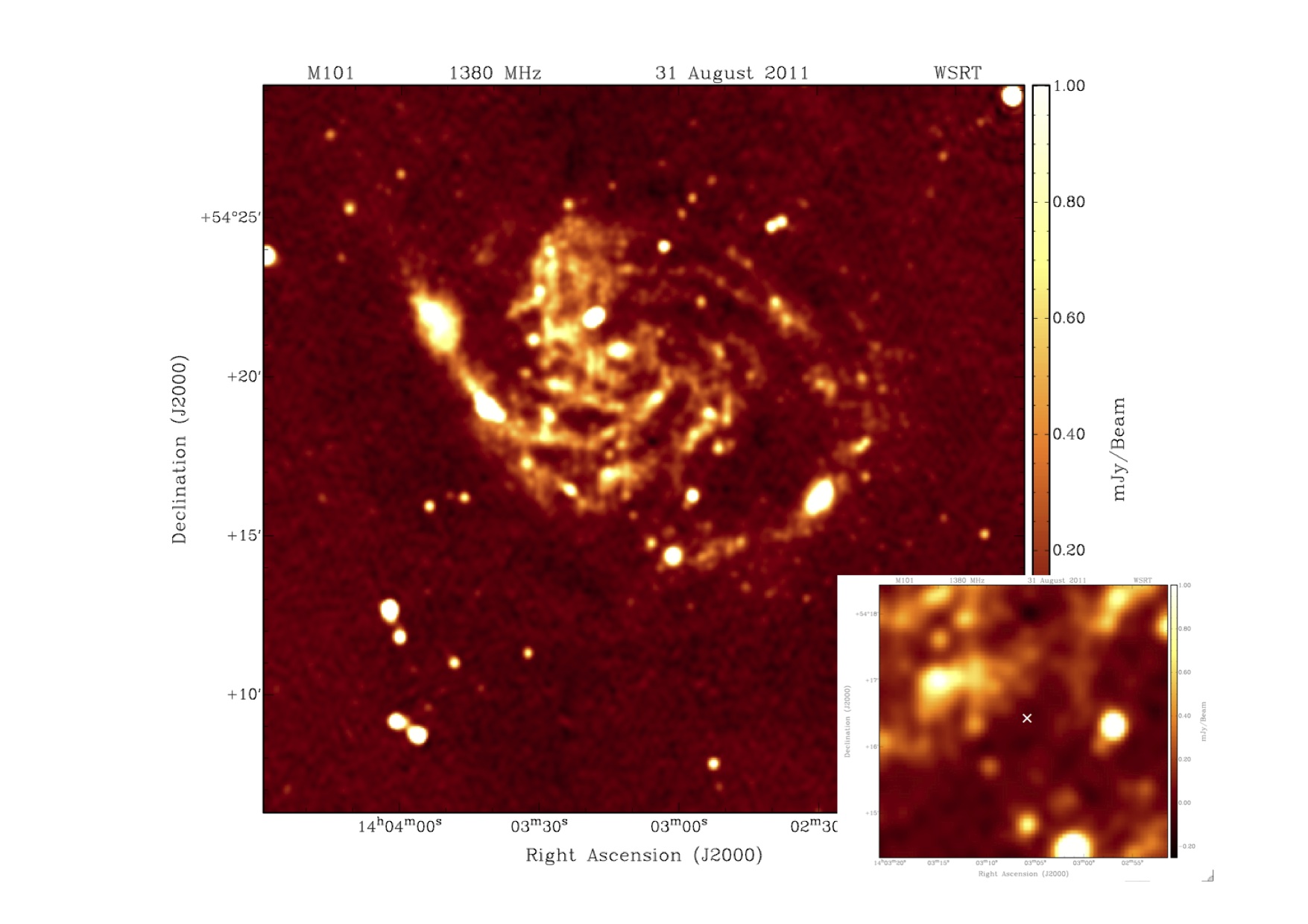Daily Image
28-09-2011No radio emission from SN2011fe in M101
| Submitter: | Ger de Bruyn |
| Description: | The giant spiral galaxy M101 had produced 3 supernovae in the last 100 years: SN1909, SN1951H and SN1970g. But the fourth one that exploded on the 23d of August 2011, designated SN2011fe, will probably become its most famous one. It exploded in the same part of the galaxy as SN1970g as was shown in a previous AJPOD (2 Sep 2011). SN2011fe, or PTF11kly as it was called upon discovery, will probably become one of the best studied SNe. It is a Type Ia, famous because of their use in cosmology, and at maximum, which we just passed, it reached a blue magnitude of 10 !! Lots of optical photons ! Unfortunately M101 is slowly disappearing into the evening twilight. I got involved in a search for radio emission from the SN using the WSRT. At 21cm the WSRT is still one of the most sensitive telescopes in the world. On 31 August 2011, 8 days after the explosion, we observed M101. Processing was done with NEWSTAR within 24 hours and the resulting synthesis image is shown here. The location of the SN is indicated by the cross in the insert. The richly structured radio continuum emission from the disk of M101 has not been imaged in so much detail before. Fortunately the SN occurred in an area where the disk emission is faint so the confusion was minimal. The noise level in the image is about 16 microJy. Regrettably, we did not detect any emission.This was, however, not unexpected because no type Ia SN has ever been detected in the radio. The upper limit proved nevertheless very interesting; upper limits at higher frequencies were also set by Carma and the VLA taken in the first few days after the explosion. The successful Chevalier (1982) model for the radio emission from radio supernova (that is those of Type Ib/c and Type II, resulting from the explosion of massive stars) relates the radio flux density to the mass shed in the late phases of the progenitors life. The absence of radio emission from SN2011fe suggests that the progenitor, most likely a binary containing at least one white dwarf (WD), had not been loosing significant amounts of matter (< 10^-8 Msun/year) in the last 100-1000 years. A similar mass loss limit can be obtained from the lack of X-ray emission. An interesting aspect of this study is the fact that the putative relativistic electrons produced behind the shockwave would quickly, that is within hours to days after their acceleration, loose their energy to Inverse Compton X-ray emission and not to radio emission. In order to properly interpret the lack of radio emission therefore requires continuous particle acceleration. This work was submitted to the Astrophysical Journal on 13 Sep 2011 (Horesh et al., arXiv: 1109.2912.v1) just 2.5 weeks after the SN announcement. |
| Copyright: | Ger de Bruyn |
| Tweet |  |
